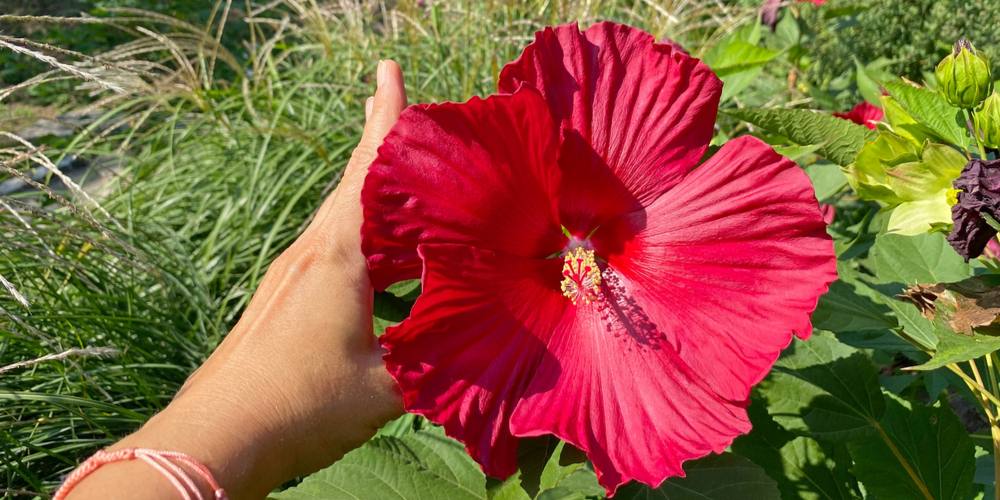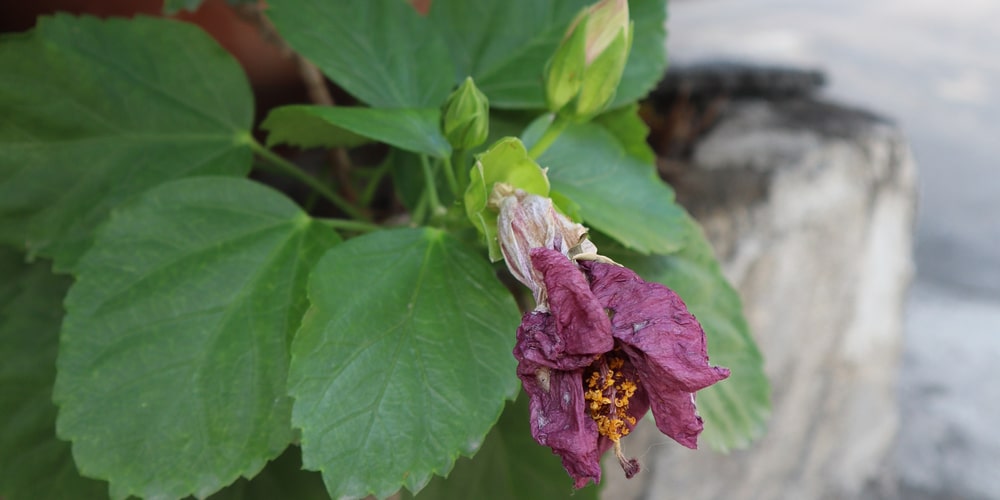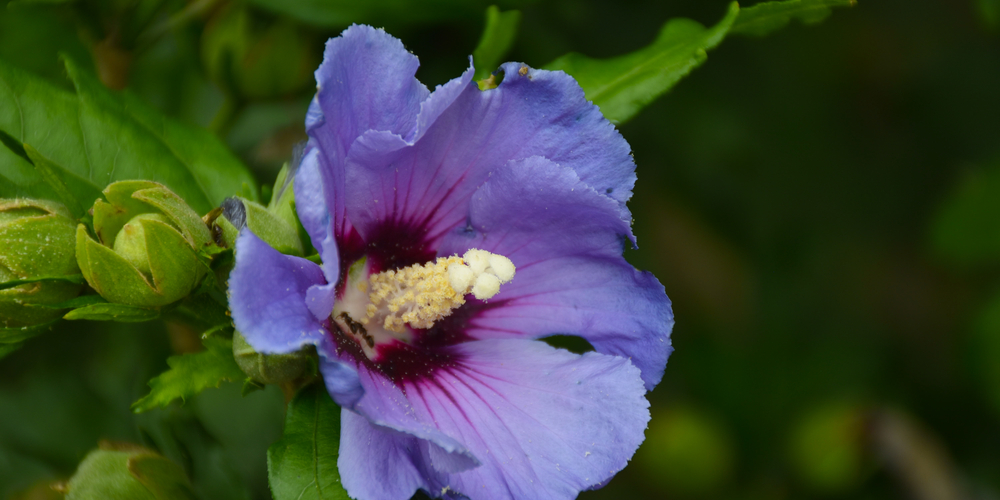The large and brightly-colored flowers of hibiscus, along with its shrubby growth habit, make it a popular choice for patio and foundation plantings and for use in mixed borders. Aside from its beautiful display of blooms, hibiscus is also known for its ease of care.
However, despite being hardy in a wide range of climates, hibiscus plants may occasionally experience transplant shock even with the best care. One common symptom of transplant shock in hibiscus is wilting leaves.
Hibiscus Care Guide
Hibiscus plants are herbaceous perennials which means they die back to the ground every winter and reemerge in spring. They are native to tropical and subtropical regions of the world but can be grown as houseplants or outdoors in temperate climates.
Despite their tropical origins, hibiscus plants are quite tolerant of a wide range of temperatures. They can even withstand short periods of frost.
These plants thrive in organically rich soil that is neutral to acidic with a pH of 6.5 to 6.8. Deep and infrequent watering during the spring and fall is highly encouraged. If you’re in cooler climates, however, take note that hibiscus may only be actively growing during the summer months.
Although they’re prized for their colorful and beautiful blooms during summer, each bloom would only last a day or two. The plant will continue to produce new flowers throughout the season.
Hibiscus plants need full sun to partial shade and should be protected from strong winds. They are generally quite tolerant of heat and humidity and can even survive temperatures as high as 115°F, as long as they’re provided with an adequate amount of water.
Moreover, these plants can be susceptible to several pests and diseases, so it is important to inspect them regularly and take steps to prevent problems before they occur.
Why Is My Hibiscus Wilting after Transplant
One of the most frustrating things that can happen to gardeners is watching their beautiful hibiscus wilting after a transplant. While it’s not uncommon for hibiscus plants to experience some degree of wilting and yellowing of leaves, you can do a few things to help your plant recover.
Transplant shock is the most common reason and occurs when a plant is stressed from being moved. When the conditions of its growth change drastically, the plant may drop its leaves and buds, and leaves may yellow and wilt.
Certain stress triggers like changes in soil and improper watering after the transplant may also contribute to transplant shock. Environmental factors such as heat, wind, and drought can also add to the stress.
Additionally, you may also need to consider if your plant has been growing in the same pot for too long, as this can deplete the nutrients in the potting medium.
What to Do and How to Prevent Wilting After Transplant
Transplant shock can be a difficult thing to overcome. It may range from a few days to a few weeks, causing the plant to experience some degree of wilting and yellowing of leaves. While it is possible for your hibiscus to bounce back, there are a few things you can do to avoid transplant shock altogether:
Transplant at the Right Time
First, it is important to choose the right time of year for transplanting. Spring and fall are generally the best times as the weather is cool and there’s less stress on the plant.
Give Enough Water Before Transferring
Your plant may require lots of water to help it recover from transplant shock. Before moving to its new environment, ensure that the soil is moist and the plant is well-watered. Doing so allows the plant to have a good supply of water to help it recover from the shock.
Mulch the Soil
The majority of hibiscus plants are tropical and used to humid conditions. Adding a layer of mulch around the base of the plant helps retain moisture in the soil, keeping the roots cooler and less stressed. As you can see, stress is one of the root causes of hibiscus wilting after transplant. You can avoid this altogether by ensuring that your plant is healthy and well-taken care of before transplanting.
Take Care of the Roots
As you lift the plant from its pot, be careful not to damage the roots. You can start by watering the plant a day or two before transplanting to make sure the roots are moist. Then, gently loosen the roots and untangle them before replanting.
Hibiscus Wilting After Transplant: Final Thoughts
Hibiscus plants are generally quite tolerant and resilient, but they are sensitive to environmental changes. Transplant shock is the most common reason for wilting and yellowing of leaves after transplant.
To avoid this, it is important to choose the right time of year for transplanting, give the plant enough water, and fertilize it regularly. With proper care and attention, your hibiscus plant will recover from transplant shock and thrive in its new environment.


